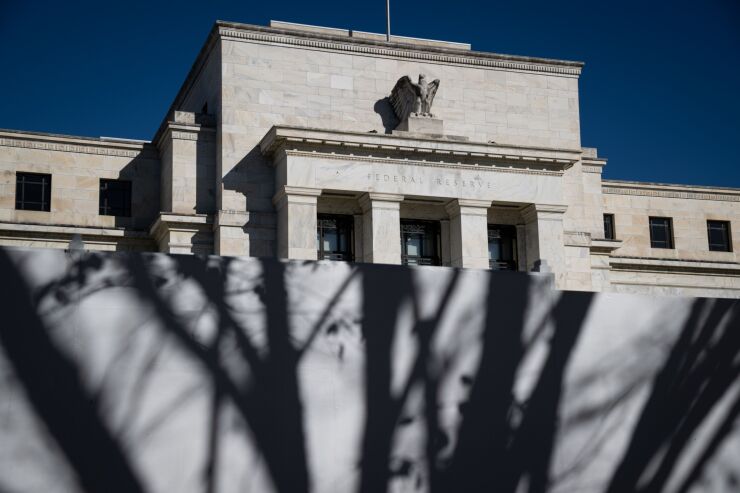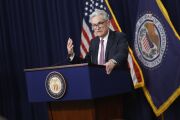
Employers added 256,000 workers last month, beating Wall Street expectations and increasing the likelihood that the Federal Reserve leaves
The hiring figure in Friday's Bureau of Labor Statistics report beat the 155,000 new jobs forecasted by Dow Jones. The unemployment rate ticked down to 4.1%, below the estimated rate of 4.2%.
The report also revised the hiring total from the past two months, adding 7,000 to October's estimate — bringing the paltry total up to 43,000 — and taking away 15,000 from November, bringing the total to 212,000. The revision did not impact the unemployment rate in either month.
The December reading indicates that the U.S. economy remains on sound footing and bolsters the argument that monetary policy is not overly restrictive. If the Fed were leaning toward keeping rates unchanged at its Jan. 28-29 meeting, the report would likely nudge it further in that direction.
This is consistent with guidance from the Federal Open Market Committee following its
"We are at or near a point at which it will be appropriate to slow the pace of further adjustments," Powell said during his post-meeting press conference. "The slower pace of cuts for next year really reflects both the higher inflation reading that we have this year and the expectation inflation will be higher."
Should the Fed hold rates unchanged for an extended period, it would prove to be a disappointment for banks that came into this year
The FOMC lowered the federal funds rate a full percentage point last year based on concerns over a softening labor market and expectations that economic activity would taper off in the final months of 2024. Instead, gross domestic product grew more than expected and topline labor readings proved resilient.
Several FOMC members indicated this week that they might favor a wait-and-see approach for future rate cuts.
Federal Reserve Bank of Boston President Susan Collins said in a Thursday speech that she expects inflation to run higher this year than she had previously anticipated. At the same time, while hiring remains strong, she is on the lookout for possible fragilities in the economy.
"This context calls for a patient approach to policy — taking the time to fully assess available information and not over-reacting to individual data readings, as we calibrate policy meeting by meeting," Collins said.
Similarly, Federal Reserve President Jeffrey Schmid said interest rates should be set at a roughly neutral level — meaning they do little to stimulate or depress economic activity — even though inflation has not returned to 2%. He noted that the natural rate of inflation could be higher now than it was before the COVID-19 pandemic due to increased government debt financing and other factors.
"My read is that interest rates might be very close to their longer-run level now," Schmid said. "Regardless, I am in favor of adjusting policy gradually going forward and only in response to a sustained change in the tone of the data. The strength of the economy allows us to be patient."
In a
"The potential release of pent-up demand following the election, especially with improving consumer and business sentiment, could also present inflationary risks, as could an increased demand for housing given the long-standing limited supply, especially of affordable housing. While it is not my baseline outlook, I cannot rule out the risk that progress on inflation could continue to stall."
Bowman also cautioned against putting too much emphasis on any single data point, especially as it relates to the labor market, noting that significant revisions to prior readings indicate that it is difficult for government models to accurately assess the employment situation in real time.
Meanwhile, Fed Gov. Christopher Waller, in his own public remarks this week, said he still anticipates further rate reductions this year. He acknowledged that there are too many economic uncertainties to make any guarantees, but his baseline expectation is that inflation will continue to fall and enable the Fed to ease monetary policy over the course of 2025.
"If the outlook evolves as I have described here, I will support continuing to cut our policy rate in 2025," he said. "The pace of those cuts will depend on how much progress we make on inflation, while keeping the labor market from weakening."






